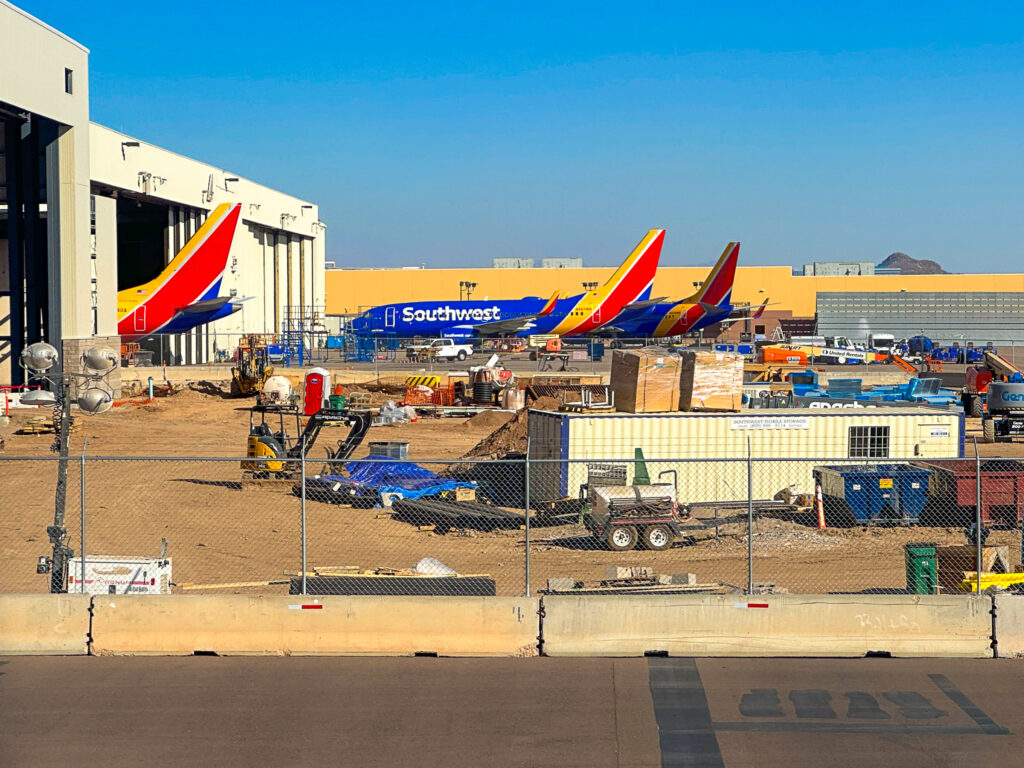Southwest Airlines is embarking on a series of strategic initiatives aimed at elevating the customer experience, improving financial performance, and increasing shareholder value. The airline, known for its distinctive open seating model, will now assign seats and offer premium seating options on all flights. This move, based on extensive customer feedback and research, represents a significant shift in the airline’s operations.
Assigned and Premium Seating
Southwest’s decision to assign seats comes after thorough research indicating a strong preference among customers for assigned seating. The airline’s studies revealed that 80% of current customers and 86% of potential customers favor assigned seating. This change is expected to attract more customers and address a key reason why some passengers choose competitors.
In addition to assigned seating, Southwest will introduce a premium seating option with extended legroom. Approximately one-third of the seats on each aircraft will feature this premium option, aligning with industry standards for narrowbody aircraft. This development is part of Southwest’s broader effort to modernize its onboard offerings, which have recently included faster WiFi, in-seat power, larger overhead bins, and RECARO seats.
Bob Jordan, Southwest’s President, CEO, and Vice Chairman of the Board, emphasized the importance of this transformation: “Moving to assigned seating and offering premium legroom options will be a transformational change that cuts across almost all aspects of the Company. Our thoughtful and extensive research makes it clear this is the right choice—at the right time—for our Customers, our People, and our Shareholders.”

Introduction of Redeye Flights
Southwest is also launching overnight redeye flights, marking a step towards 24-hour operations. Initial routes will connect Las Vegas, Los Angeles, and Phoenix to Baltimore, Orlando, and Nashville, with flights commencing on Valentine’s Day 2025. The introduction of redeye flights is expected to enhance aircraft utilization and generate additional revenue without the need to acquire additional aircraft.
Leadership Changes
To oversee these transformations, Ryan Green has been appointed as Executive Vice President Commercial Transformation. Previously serving as Executive Vice President and Chief Commercial Officer, Green will lead the rollout of these new initiatives. His experience in customer trends and cabin transformation, along with his work on Southwest’s Rapid Rewards loyalty program, positions him well for this role.
“I’m eager to lead this next step in our transformation to serve our Customers with an even better Southwest,” said Green. “These changes are expected to generate additional revenue as we capitalize on greater demand for Southwest Airlines and offer Customers the ability to purchase premium seating options.”
Future Announcements
Southwest will provide more detailed information about these initiatives, including product designs, cabin layouts, and financial impacts, during its Investor Day in late September. The airline plans to make bookings for the new seating options available in 2025, pending necessary approvals from the Federal Aviation Administration.
Gary Kelly, Executive Chairman of the Board, expressed his support: “The Board fully supports these efforts to usher in a new era for Southwest Airlines, and we have the ultimate confidence in Bob and our Leadership Team to design and deliver an experience that is unique and true to our Southwest legacy.”
These strategic changes reflect Southwest Airlines’ commitment to evolving with customer preferences and enhancing its competitive edge in the airline industry.
Analysis
Across the industry, low-cost airlines have been struggling, and Southwest is no exception. Southwest posted its first-ever loss in April 2024 ending a profitable run since its founding. It comes as no surprise that major changes were coming to Southwest.
A unique quirk for Southwest was the lack of assigned seating. Passengers could sit anywhere and getting a coveted boarding group A is desirable. By using this model Southwest was able to turn around aircraft in record time quickly. The model served Southwest well, until 2024 when they now fly flights from the mainland US to Hawaii. Having the peace of mind of what seat you’ll be in for such a long flight I see assigned seats as a plus. Southwest is one of the few low-cost airlines worldwide that offers connections. If a passenger is late from another inbound flight they may get stuck with a middle seat.
From a business point of view, southwest loses out on revenue. Southwest since the beginning has had very few revenue streams as they give 2 free checked bags, free snacks and drinks, and no change fees. I believe to keep Southwest unique they decided to eliminate open seating while in some ways I am saddened by the change, it makes it easier for me to consider flying Southwest on connecting itineraries for a future flight review. I am glad Southwest chose to eliminate open seating instead of a well-liked perk like free checked bags.
One thing I found astounding is Southwest never ran red-eye flights, from the press release it seems the issue was a lack of technology. Southwest is in the process of upgrading its technology following an IT meltdown. This move is a no-brainer to me as it increases aircraft utilization, and from my experience traveling, I’ve observed that there is demand for red-eye types of flights.
I’m excited to see what other changes Southwest announces in September


